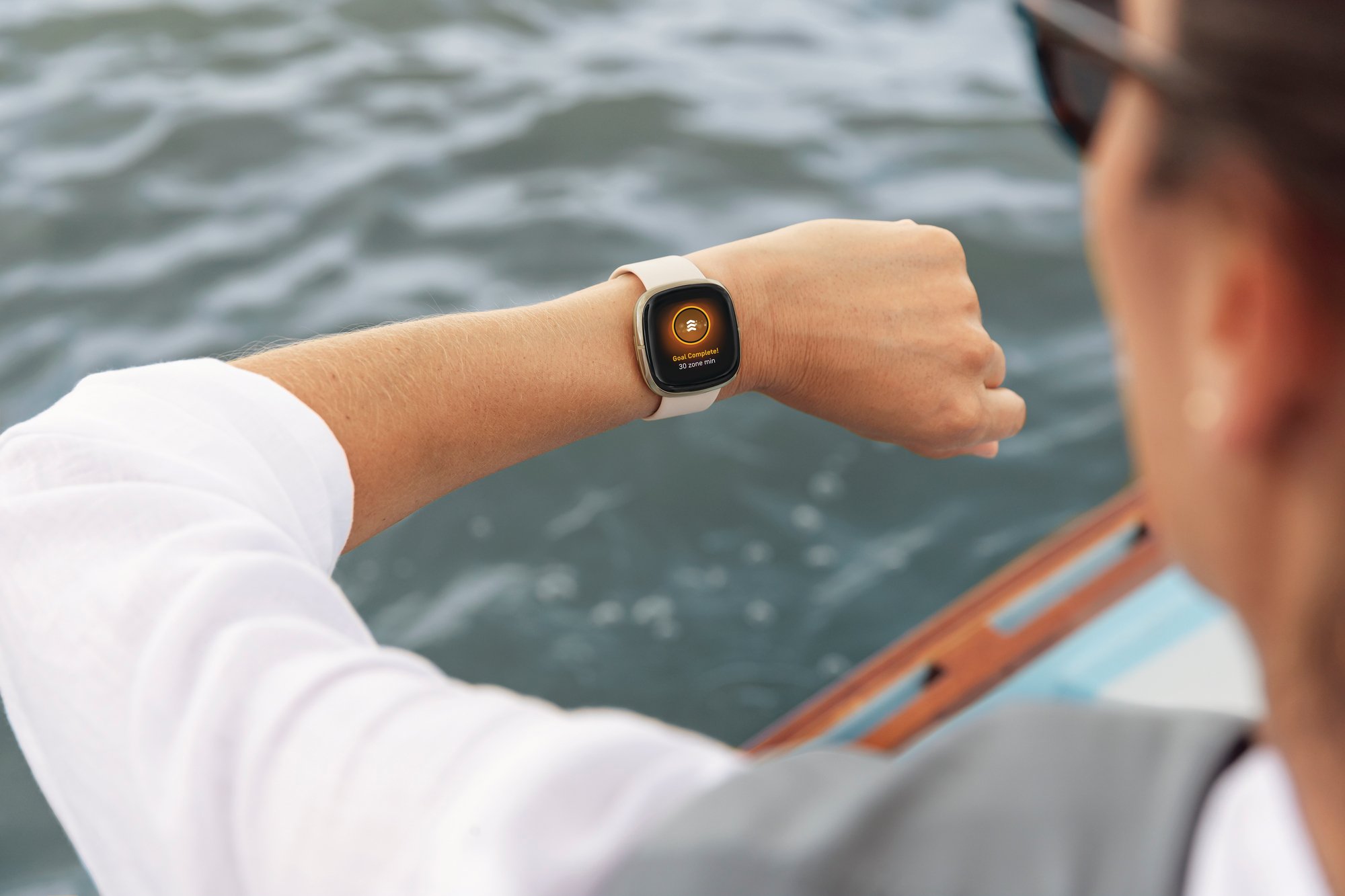Shares of Fitbit (FIT +0.00%) rallied 15% the day after the connected-fitness company presented its second-quarter report, beating its previously stated guidance. And the stock has moved up since that Aug. 3 jump. That's good news for investors, who have been punished during what management is calling a transitional year and are still down 60% over the past 12 months. But signs are emerging that the pain could be easing.
Fitbit had predicted Q2 revenue of $340 million at the midpoint, and beat that with a total of $353 million. Its Q2 guidance was for adjusted net loss per share in the range of $0.14 to $0.17 and it beat that with an adjusted net loss of $0.08 per share.
Supply and demand back in line
On a year-over-year basis, Fitbit sold 40% fewer devices in the just-reported quarter than it did in the year-ago quarter -- 3.4 million fitness trackers compared with 5.7 million. However, it is a big sequential improvement over the 3 million units sold in the first quarter.
Some of the recent weakness can be chalked up to a disconnect between inventory at retailers and demand. CEO James Park talked about sell-in (when the company sells a device to a retailer) and sell-through (when the retailer sells to the consumer) being mismatched. In other words, retailers had enough Fitbit devices to meet consumer demand, which contributed to the lowered number of devices sold Fitbit has been reporting.
Investors were told that the excess inventory has been worked down and this problem is now gone. Another positive is that Fitbit's direct sales to consumers increased 34% year-over-year to $48 million, a selling format that brings higher profit margins than selling to retailers.
Updates on a much-needed new device
The other contributing factor to Fitbit's long slide is that consumers have begun to favor smartwatches over fitness trackers. Fitbit has addressed this in part with devices like the Blaze and Surge, but the inability to download third-party apps generally excludes those devices from the "smartwatch" category that Apple's (AAPL 3.68%) products dwell in.
Not to fear, though, as the company has been rumored for some time to be working on a proper contender in the space. Park confirmed that that device will be available in time for the all-important holiday shopping season, complete with GPS tracking, water resistance to 50 meters, and third-party software development ability. The device will have a "health and fitness-first focus," Park said. Still missing: exact pricing and release date.
While investors continue to wait for final details, the impression was given that existing products will continue to generate all of the revenue in the third quarter. Nevertheless, guidance for revenue in the third quarter was pegged at $380 million to $400 million, another 8% sequential improvement at the bottom end of expectations.

Image source: Fitbit.
More than just devices
I have previously contended that Fitbit is a health and fitness company first before it is a seller of tech devices. Park emphasized that point on the call by saying devices were a "means to an end," that end being helping people live healthier lives.
While Fitbit is trying to chase the current trend toward smartwatch devices, Park mentioned the opportunity Fitbit is trying foster in the healthcare industry:
As some consumers lean toward more sophisticated devices, we also see traditional trackers gaining traction on the healthcare side where lower selling prices are required and scalable. In the first half of the year, we've signed or renewed our work with nearly 700 organizations, including prominent research institutions like Northwestern University and enterprise customers like Sallie Mae, Trilogy Health Services and Alignment Healthcare.
While fitness trackers are used by exercise enthusiasts now to do things like track steps and monitor heart rate, the potential is much greater. One example is in the area of studying sleep, which is something Fitbit devices collect data on. Park said that one sleep disorder, sleep apnea, which affects breathing while you sleep, affects 22 million Americans -- 80% of whom don't realize they have it.
This represents an estimated $5 billion TAM [total addressable market] that was previously only identified through an expansive sleep lab. Given the scale of our data and what we are able to track, we believe that a Fitbit device could one day serve as part of a solution to recognize and monitor a number of other health conditions such as other sleep disorders, hypertension and arrhythmias.
A business on the mend?
It is beginning to look like Fitbit may have found a bottom after its big tumble in sales over the last year. With a proper smartwatch on the way and continued investment in other areas of connected fitness, the second half of 2017 looks like it could be the beginning of a new cycle of growth for the wearable tech company.






